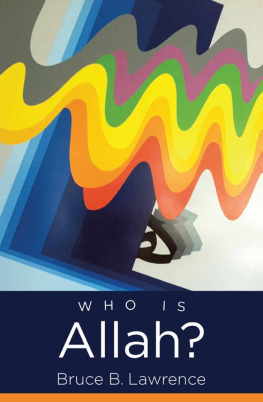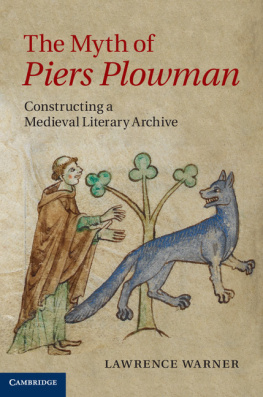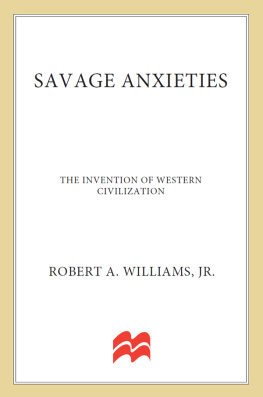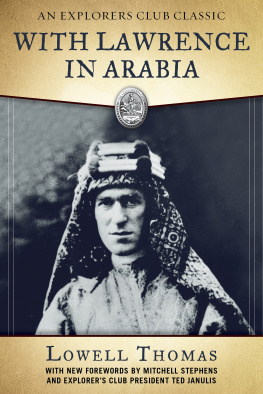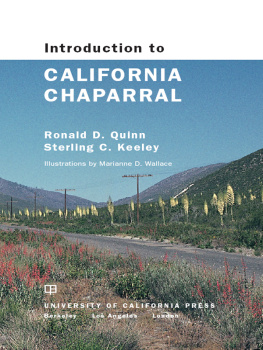Lawrence H Keeley - War before civilization: [the myth of the peaceful savage]
Here you can read online Lawrence H Keeley - War before civilization: [the myth of the peaceful savage] full text of the book (entire story) in english for free. Download pdf and epub, get meaning, cover and reviews about this ebook. City: USA, year: 1996, publisher: Oxford University Press, genre: Politics. Description of the work, (preface) as well as reviews are available. Best literature library LitArk.com created for fans of good reading and offers a wide selection of genres:
Romance novel
Science fiction
Adventure
Detective
Science
History
Home and family
Prose
Art
Politics
Computer
Non-fiction
Religion
Business
Children
Humor
Choose a favorite category and find really read worthwhile books. Enjoy immersion in the world of imagination, feel the emotions of the characters or learn something new for yourself, make an fascinating discovery.

- Book:War before civilization: [the myth of the peaceful savage]
- Author:
- Publisher:Oxford University Press
- Genre:
- Year:1996
- City:USA
- Rating:4 / 5
- Favourites:Add to favourites
- Your mark:
- 80
- 1
- 2
- 3
- 4
- 5
War before civilization: [the myth of the peaceful savage]: summary, description and annotation
We offer to read an annotation, description, summary or preface (depends on what the author of the book "War before civilization: [the myth of the peaceful savage]" wrote himself). If you haven't found the necessary information about the book — write in the comments, we will try to find it.
War before civilization: [the myth of the peaceful savage] — read online for free the complete book (whole text) full work
Below is the text of the book, divided by pages. System saving the place of the last page read, allows you to conveniently read the book "War before civilization: [the myth of the peaceful savage]" online for free, without having to search again every time where you left off. Put a bookmark, and you can go to the page where you finished reading at any time.
Font size:
Interval:
Bookmark:
WAR Before Civilization
Lawrence H. Keeley

Oxford University Press
Oxford New York
Athens Auckland Bangkok Bogot Bombay
Buenos Aires Calcutta Cape Town Dar es Salaam
Delhi Florence Hong Kong Istanbul Karachi
Kuala Lumpur Madras Madrid Melbourne
Mexico City Nairobi Paris Singapore
Taipei Tokyo Toronto Warsaw
and associated companies in
Berlin Ibadan
Copyright 1996 by Oxford University Press, Inc.
First published by Oxford University Press, Inc., 1996
First issued as an Oxford University Press paperback, 1997
Oxford is a registered trademark of Oxford University Press
All rights reserved. No part of this publication may be reproduced,
stored in a retrieval system, or transmitted, in any form or by any means,
electronic, mechanical, photocopying, recording, or otherwise,
without the prior permission of Oxford University Press.
Library of Congress Cataloging-in-Publication Data
Keeley, Lawrence H.
War before civilization / Lawrence H. Keeley.
p. cm. Includes bibliographical references and index.
ISBN-13 978-0-19-51 1912-I (Pbk.)
1. Warfare, Prehistoric. 2. Fortification, Prehistoric.
3. Weapons, Prehistoric. I. Title.
GN799.W26K44 1996
355.00901dc20 94-8998
10 9 8
Primed in the United States of America
To my mother, Ruth; my son, Pete;
and the memory of my father, Lawrence
This book had its genesis in two personal failuresone of a practical academic sort, the other intellectual. As a result of these, I realized that archaeologists of the postwar period had artificially pacified the past and shared a pervasive bias against the possibility of prehistoric warfare.
My practical failure involved two unsuccessful research proposals requesting funds to investigate the functions of recently discovered fortification surrounding some Early Neolithic (ca. 5000 B.C.) villages in northeastern Belgium. Such sites represented the settlements of the first farmers to colonize central and northwestern Europe. These two proposals to the U.S. National Science Foundation (which had supported my previous research) requested funds to excavate several Early Neolithic village sites near to the already excavated frontier site of Darion. My Belgian colleague, Daniel Cahen, had found that Darion had been surrounded by an obvious fortification consisting of a 9-foot-deep ditch backed by a palisade. My research proposal claimed that Darions defenses indicated that this Neolithic frontier was a hostile one and predicted that excavations at nearby sites would reveal similar fortifications. The archaeologists who reviewed these proposals could not accept the defensive nature of the Darion enclosure and therefore could not recommend funding a project predicated on what they regarded as an erroneous interpretation. A third proposal was successful only after I rewrote it to be neutral about the function of the Darion ditch-palisade, which was referred to as an enclosure rather than as a fortification. In other words, only when the proposal was cleansed of references to that archaeological anathema, warfare, was it acceptable to my colleagues.
With our new funding, our excavations at four other Early Neolithic sites soon documented that two of them had also been fortified. We had been right after all: on the Early Neolithic frontier, at least when it reached Belguim, fortified villages were rather common; one just had to know how to look for them. Despite having normally inflated academic egos, Daniel and I were shocked by this vindication. I recall that as we drove home on the day our excavations at the site of Waremme-Longchamps had revealed a deep ditch and palisade, our conversation was very limited. It consisted of a stunned silence periodically punctuated by one or the other of us stating in an amazed tone, We have a ditch and palisade! Our mutal amazement was based on the prejudices we shared with the very colleagues who had given my early, unsuccessful proposals a skeptical review. Subconsciously, we had not really believed our own arguments: we, too, had assumed that Darions fortifications were an aberration and had used them only as an excuse to satisfy our curiosity about the other sites in its vicinity. This realization about our own expections later led to a series of conversations among Daniel, Anne Cahen-Delhaye (a specialist in later Bronze and Iron Age archaeology), and me about the difficulty archaeologists of our generation had in accepting evidence of prehistoric warfare. Later, reflecting on my own education and career, I realized that I was as guilty as anyone of pacifying the past by ignoring or dismissing evidence of prehistoric warfareeven evidence I had seen with my own eyes.
My first excavations, as a college freshman, were on a prehistoric shell-mound village site on San Francisco Bay, where we uncovered many burials of unequivocal homicide victims. It never occurred to me or my fellow students that the skeletons with embedded projectile points we excavated evidenced a homicide rate that was extraordinarily high. This brutal physical evidence we were uncovering never challenged our acceptance of the traditional view that the native peoples of California had been exceptionally peaceable.
Even more tellingly, in my senior thesis, I used all the rhetorical tricks I accuse my colleagues of here to deny the obvious importance of warfare in early Mesoamerican civilizations. Since grammar school, I had been fascinated by military history and avidly read every book on the subject I could get my hands on. For my B.A. thesis at the end of the 1960s, I chose a topicthe role of militarism in the rise of Mesoamerican civilizationsthat seemed to unite my personal interest in military history with my developing academic interest in prehistory. In fact, it was a final decree of divorce, since I concluded (dutifully following the current consensus of archaeological opinion) that the first civilization in Mesoamerica had developed in especially peaceful circumstances. In other words, I argued that militarism and warfare had no role in the evolution of the Olmec, Teotihuacan, and Classic Maya civilizations and that warfare and soldiers had become important only when these more or less theocratic civilizations collapsed.
A quarter-centry later, it is abundantly clear that this prevailing view was quite wrong. The percentage of violent deaths at the prehistoric California Indian village I had helped excavate has recently been tabulated by my college classmate, Bob Jurmain, and it is at least four times the percentage of violent deaths suffered by inhibitants of the United States and Europe in this bloody century. The Classic Maya city-states, one of the subjects of my senior thesis, clearly were at war very frequently and were ruled by particularly militant kings. Ironically, the archaeological evidence that all was not peaceful in the Mayan realm was readily available when I wrote my senior thesis (gruesome murals at Bonampak, fortifications at Becan and Tikal, countless Mayan depictions of war captives and their armed captors, and so on). But like the archaeologists whose work I relied on, I dismissed this data as either unrepresentative, ambiguous, or insignificant. Only as more and more Mayan hieroglyphic writing has been deciphered during the last decade has archaeological opinion shifted from its erroneous conception of the peaceful Maya.
Like most archaeologists trained in the postwar period, I emerged from the first stage of my education so inculcated with the assumption that warfare and prehistory did not mix that I was willing to dismiss unambigous
Next pageFont size:
Interval:
Bookmark:
Similar books «War before civilization: [the myth of the peaceful savage]»
Look at similar books to War before civilization: [the myth of the peaceful savage]. We have selected literature similar in name and meaning in the hope of providing readers with more options to find new, interesting, not yet read works.
Discussion, reviews of the book War before civilization: [the myth of the peaceful savage] and just readers' own opinions. Leave your comments, write what you think about the work, its meaning or the main characters. Specify what exactly you liked and what you didn't like, and why you think so.


